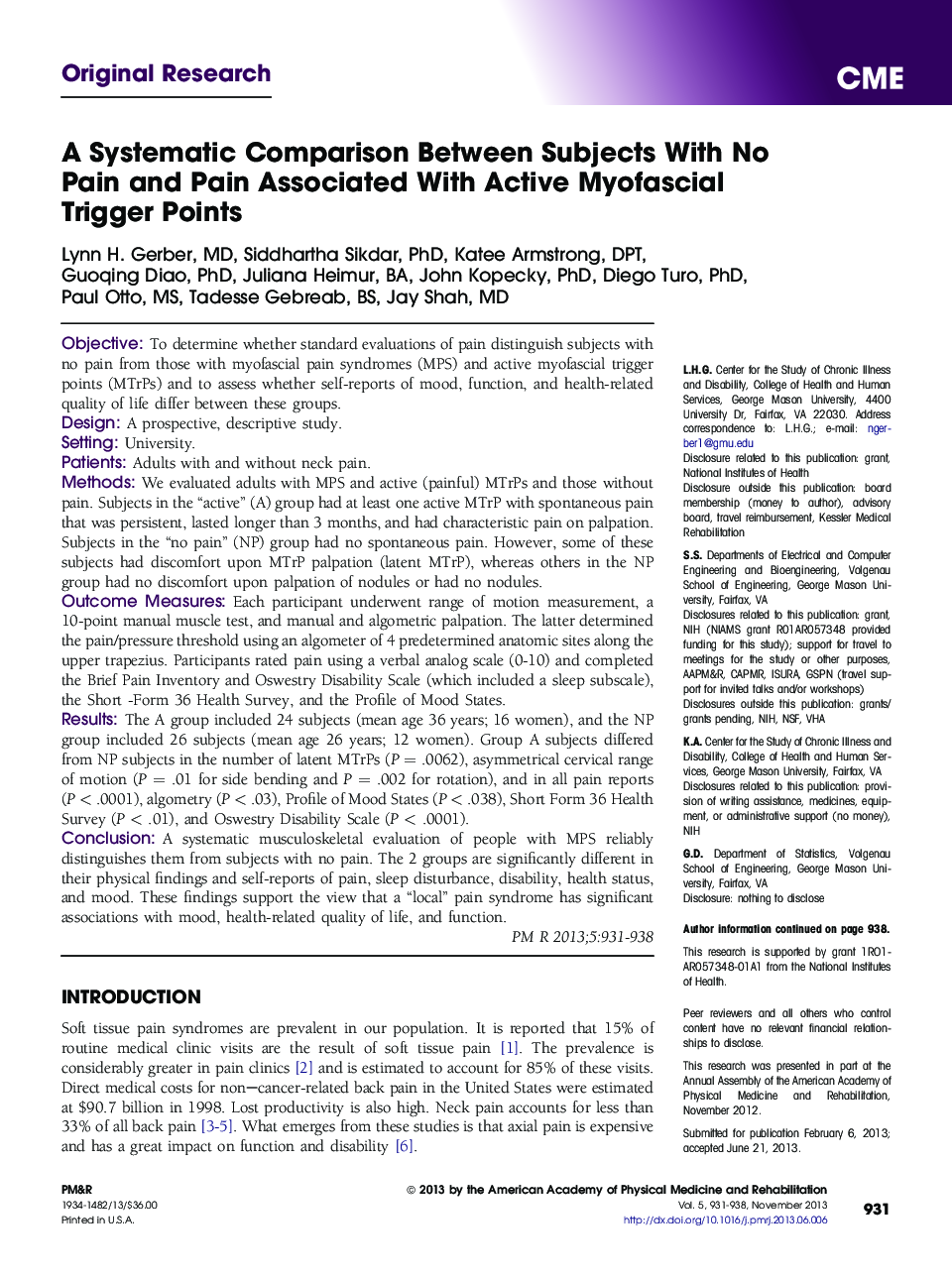| Article ID | Journal | Published Year | Pages | File Type |
|---|---|---|---|---|
| 2705637 | PM&R | 2013 | 8 Pages |
ObjectiveTo determine whether standard evaluations of pain distinguish subjects with no pain from those with myofascial pain syndromes (MPS) and active myofascial trigger points (MTrPs) and to assess whether self-reports of mood, function, and health-related quality of life differ between these groups.DesignA prospective, descriptive study.SettingUniversity.PatientsAdults with and without neck pain.MethodsWe evaluated adults with MPS and active (painful) MTrPs and those without pain. Subjects in the “active” (A) group had at least one active MTrP with spontaneous pain that was persistent, lasted longer than 3 months, and had characteristic pain on palpation. Subjects in the “no pain” (NP) group had no spontaneous pain. However, some of these subjects had discomfort upon MTrP palpation (latent MTrP), whereas others in the NP group had no discomfort upon palpation of nodules or had no nodules.Outcome MeasuresEach participant underwent range of motion measurement, a 10-point manual muscle test, and manual and algometric palpation. The latter determined the pain/pressure threshold using an algometer of 4 predetermined anatomic sites along the upper trapezius. Participants rated pain using a verbal analog scale (0-10) and completed the Brief Pain Inventory and Oswestry Disability Scale (which included a sleep subscale), the Short -Form 36 Health Survey, and the Profile of Mood States.ResultsThe A group included 24 subjects (mean age 36 years; 16 women), and the NP group included 26 subjects (mean age 26 years; 12 women). Group A subjects differed from NP subjects in the number of latent MTrPs (P = .0062), asymmetrical cervical range of motion (P = .01 for side bending and P = .002 for rotation), and in all pain reports (P < .0001), algometry (P < .03), Profile of Mood States (P < .038), Short Form 36 Health Survey (P < .01), and Oswestry Disability Scale (P < .0001).ConclusionA systematic musculoskeletal evaluation of people with MPS reliably distinguishes them from subjects with no pain. The 2 groups are significantly different in their physical findings and self-reports of pain, sleep disturbance, disability, health status, and mood. These findings support the view that a “local” pain syndrome has significant associations with mood, health-related quality of life, and function.
